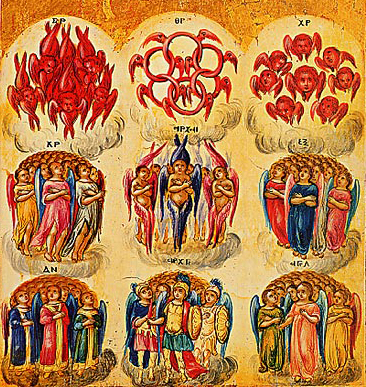Hierarchy of angels
In the angelology of different religions, a hierarchy of angels is a ranking system of angels. Higher ranks have greater power or authority over lower ranks, and with different ranks having differences in appearance, such as varying numbers of wings or faces.
The most influential Christian angelic hierarchy was put forward around the turn of the 6th century AD by Pseudo-Dionysius the Areopagite in his work De Coelesti Hierarchia (On the Celestial Hierarchy). He claimed to be an important figure who was converted by Paul the Apostle, who authored most of the New Testament, and his work enjoyed greater influence than it would have if he had used his actual name, until Erasmus publicized doubts about the age of the work in the early 16th century.
Angels are organized into nine orders, or Angelic Choirs. It is mirrored in some ways by the hierarchy of Hell, which organizes demons into categories and ranks them according to ability.
The nine orders
Pseudo-Dionysius (On the Celestial Hierarchy) and Thomas Aquinas (Summa Theologiae) drew on passages from the New Testament, specifically Ephesians 1:21 and Colossians 1:16, to develop a schema of nine Choirs of angels. These have been incorporated into writings concerning the 72 Kabbalistic angels.
